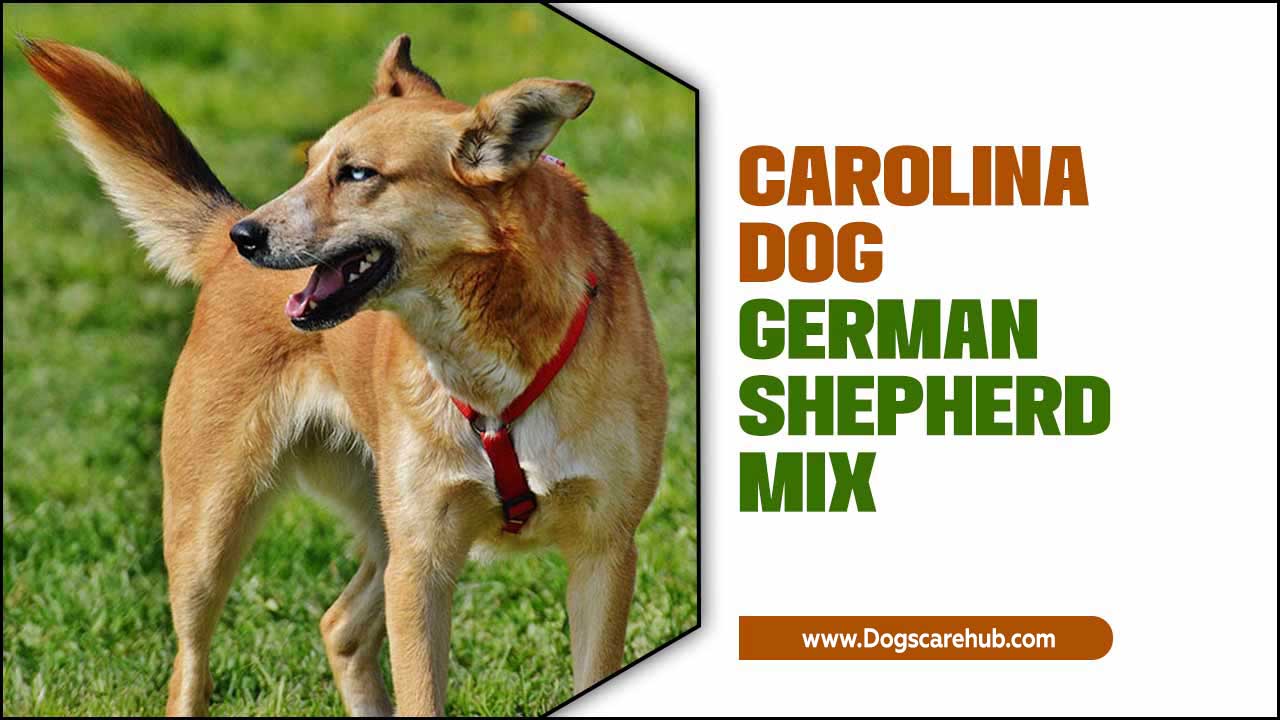Have you ever seen a dog act like it’s the boss? It’s a bit like when a kid wants to be the leader in a game. Dogs sometimes show what we call “dominance aggression.” This can surprise new dog owners. But don’t worry! Learning about dog dominance aggression for beginners can be easier than it sounds. Dogs might try to show they are in charge. With some simple steps, you can understand and manage it. Let’s explore this interesting topic together!
Key Takeaways
- Dog dominance aggression is about dogs trying to lead.
- Beginners can learn to handle aggressive behaviors easily.
- Understanding dog language is key for managing aggression.
- Simple training can help reduce dominance aggression.
- Stay calm and consistent with your dog.
Understanding Dog Dominance Aggression
Dogs are social animals. They live in groups called packs in the wild. In these packs, there’s always a leader. When dogs live with humans, they may try to be the leader. This is called dog dominance aggression. Beginners might find this behavior tricky. But once you understand why dogs act this way, it’s easier to manage. Signs of dominance aggression include growling, snapping, or guarding objects. Learning to see these signs helps keep both you and your dog happy.
- Dogs may growl to show dominance.
- Snapping can be a warning sign.
- Guarding food is a common behavior.
- Some dogs protect their favorite toys.
- Dogs might push past to lead on walks.
It’s important to watch your dog’s body language. Understanding what your dog is trying to say helps you respond correctly. If a dog is being dominant, stay calm. Never punish aggressive behavior with aggression. Instead, use positive reinforcement to teach your dog new behaviors. With time and patience, most dogs learn to respect their humans as the leaders.
Fun Fact: Dogs have been living with humans for over 15,000 years!
Why Dogs Show Dominance
Have you ever wondered why dogs sometimes seem bossy? Dogs might act this way because they feel unsure or want to control their environment. Imagine if you moved to a new school and wanted to fit in. You might try to lead the group to feel secure. Dogs do something similar. They might try to show dominance to understand their place in the family. Knowing this helps us be patient and guide our pets more effectively.
Recognizing Dominant Behaviors
Can you tell what’s on a dog’s mind just by looking? Dogs use their bodies to express how they feel. A stiff tail, direct stare, or standing tall can mean they feel dominant. It’s like when someone stands tall to look confident. By learning to read these signs, you can respond properly. You’ll know when your dog is trying to control things. This helps keep everyone safe and happy.
Dealing with Dominance in Puppies
Do puppies act dominant too? Yes, even young dogs can show dominance! Puppies might try to take charge during playtime. It’s like when kids play and someone wants to set the rules. Teaching puppies early helps prevent problems. Use toys to distract them from unwanted behavior. Praise them when they listen to you. This sets a good foundation for a well-behaved dog.
Training Tips for Aggressive Dogs
Training a dog isn’t just about teaching tricks. It helps dogs understand how to behave around people. If your dog shows dominance aggression, training can help. Start with simple commands like sit, stay, and come. This teaches your dog to listen to you. Use treats and praise to make learning fun. Dog dominance aggression for beginners can be managed with patience and consistency.
- Teach basic commands like “sit” and “stay.”
- Use treats as rewards during training.
- Practice commands daily for best results.
- Keep training sessions short and fun.
- Always remain calm and patient.
When training, remember to be consistent. Dogs thrive on routine. If you let them get away with something once, they might try again. Always reward good behavior, and ignore or redirect bad behavior. This reinforces the idea that good things come from listening to you. Over time, your dog will respect you as the leader and feel confident in their role.
Fun Fact: Dogs can understand up to 250 words and gestures!
Using Positive Reinforcement
What is positive reinforcement? It’s a way of rewarding good behavior to encourage it. Imagine getting a sticker every time you did your homework. That’s positive reinforcement. Dogs love treats and praise. When they do something right, give them a treat. This makes them want to do it again. Soon, they’ll be following your commands happily.
Consistency is Key
Have you ever noticed how much dogs love routine? Consistency helps them know what to expect. It’s like having your favorite cereal every morning. If you change it, it might feel strange. With training, keep the rules the same. Everyone in the family should follow them too. This way, your dog knows exactly what’s expected.
Keeping Training Fun
Do you like learning new things? Dogs do too! Training sessions should be fun. Use games to teach commands. This makes learning exciting for your dog. If they enjoy the process, they are more likely to listen. Play games that teach them to come when called or to follow you. This keeps their mind active and builds a stronger bond between you.
Preventing Dog Dominance Aggression
Preventing aggression is best done early. When dogs know their place in the family, they’re less likely to act out. Start by setting boundaries. Let your dog know what they can and can’t do. This helps them feel secure. Use gates to keep them out of off-limit areas. Spend time with your dog every day. This strengthens your bond and reduces anxiety.
- Set clear boundaries for your dog.
- Use gates to block off-limit areas.
- Spend time playing with your dog.
- Ensure they get enough exercise daily.
- Provide mental stimulation through toys.
Exercise is crucial for preventing aggression. A tired dog is a happy dog. Regular walks and playtime help burn off energy. Mental stimulation is important too. Puzzle toys and games keep your dog’s mind sharp. When dogs have enough to do, they don’t feel the need to be bossy. Instead, they feel relaxed and content in their environment.
Fun Fact: Dogs have unique nose prints, just like human fingerprints!
Setting Boundaries
Why do dogs need boundaries? Boundaries help dogs feel safe. Imagine if you had no rules at home. It might feel confusing. Boundaries teach dogs what is okay and what’s not. For example, they should know not to jump on guests. Consistent rules keep them well-behaved. This makes living together more enjoyable.
Importance of Exercise
Do you feel better after playing outside? Dogs need exercise too! Regular exercise helps dogs stay healthy and happy. It burns off excess energy. Without enough playtime, dogs might become restless. This can lead to aggressive behavior. Make sure your dog gets daily walks and active playtime. It keeps them fit, both mentally and physically.
Using Toys for Stimulation
Have you seen puzzle toys for dogs? They’re like fun brain games! These toys challenge your dog to think. It keeps their mind busy. Dogs love working for treats hidden inside. This provides mental exercise. It also helps prevent boredom and aggression. Rotating toys keeps things exciting. Your dog will love discovering new challenges!
Creating a Safe Environment
A safe environment is key for a well-behaved dog. Dogs feel secure in predictable surroundings. Keep your home dog-friendly. Remove things that might tempt bad behavior. Store shoes and food out of reach. This helps dogs avoid trouble. Secure any unsafe areas with baby gates. A safe space reduces stress and aggression.
- Make your home dog-friendly.
- Store shoes and food out of reach.
- Use baby gates for safety.
- Remove tempting objects from view.
- Ensure your dog has a quiet place to rest.
Every dog needs a quiet space. This is their personal retreat. Use a cozy bed or crate. It should be in a calm area of the house. This helps your dog relax when they feel overwhelmed. A secure environment prevents unnecessary stress. When dogs feel safe, they are less likely to act out. They can enjoy being part of the family.
Fun Fact: Dogs have three eyelids to protect their eyes!
Dog-Proofing Your Home
Why should you dog-proof your home? Imagine leaving your toys out with a curious toddler around. They might get into trouble! Dogs are the same. Dog-proofing prevents accidents and keeps your pet safe. Remove things they might chew, like wires or shoes. This ensures they stay out of danger. It also avoids damage to your belongings.
Creating a Quiet Space
Do you like having a cozy corner just for yourself? Dogs enjoy it too! A quiet space helps them calm down. Use a soft bed in a peaceful spot. This is their place to unwind. When things get noisy, your dog can retreat here. It keeps them happy and reduces stress. A calm dog is a well-behaved dog.
Setting Up Safe Zones
Have you ever needed a break from chaos? Dogs also benefit from calm areas. Safe zones keep them relaxed. Use gates to block off certain rooms. This limits where they can roam. It prevents them from getting into mischief. Safe zones create boundaries, making your dog feel secure. They know where they can and cannot go.
Signs of Stress in Dogs
Recognizing stress in dogs is important. It helps prevent aggression. Dogs show stress in different ways. Some pace back and forth. Others might pant or yawn when not tired. These are signs to watch for. If you notice them, try to calm your dog down. This helps prevent them from acting out aggressively.
- Pacing back and forth.
- Panting heavily without exercise.
- Yawning excessively.
- Licking lips frequently.
- Hiding or cowering.
Dogs also show stress by licking their lips or hiding. If you see these signs, offer comfort. Use a calm voice. Encourage them to relax in their quiet space. Playing soft music can help soothe nervous dogs. Reducing stress keeps them happy and less likely to display dominance aggression. A calm environment is essential for a balanced dog.
Fun Fact: A dog’s sense of smell is 40 times greater than humans!
Understanding Dog Anxiety
Have you ever felt nervous and unsure? Dogs feel anxiety too. Changes in routine can cause stress. Like moving to a new house or meeting new people. Dogs might not understand what’s happening. They may bark or hide. Showing patience and providing reassurance helps. This supports them through anxious moments.
Helping Your Dog Relax
Do you have a favorite relaxation activity? Dogs need help to relax too. Gentle petting and soothing words can calm them. Use a soft, reassuring voice. Spend quiet time together. This strengthens your bond. It teaches your dog to feel safe, even when things change around them. Relaxed dogs are happier and more obedient.
Recognizing Stress Signals
Why should you watch for stress signals in dogs? Recognizing these helps you take action early. It’s like noticing when a friend feels upset. By seeing the signs, you can help calm them down. This prevents aggressive behavior. A happy, relaxed dog is easier to manage and train. Pay attention to their body language for clues.
Conclusion
Dog dominance aggression for beginners might seem challenging, but it’s manageable. Understanding dog behavior is the first step. With patience and love, you can train your dog to be well-behaved. Remember to use positive reinforcement and set clear boundaries. Keep your dog’s environment safe and stress-free for the best results.
FAQs
Question: What is dog dominance aggression?
Answer: Dog dominance aggression is when a dog tries to be the leader. It can include behaviors like growling or guarding. It’s important to understand and manage it, especially for beginners.
Question: How can I recognize dominance aggression?
Answer: Look for signs like growling, snapping, or guarding food. A dog might also try to control situations, like leading on walks. Recognizing these behaviors helps you manage them effectively.
Question: How can beginners manage dog aggression?
Answer: Beginners can manage aggression with training and consistency. Use positive reinforcement to teach good behaviors. Set clear boundaries and ensure your dog has enough exercise and mental stimulation.
Question: Why are boundaries important for dogs?
Answer: Boundaries help dogs understand what is allowed. They feel secure knowing the rules. This reduces stress and prevents aggressive behaviors. It’s important to be consistent with boundaries.
Question: What role does exercise play?
Answer: Exercise burns off excess energy, keeping dogs calm. A tired dog is less likely to be aggressive. Regular playtime and walks are essential for a happy, well-behaved dog.
Question: How can I make my home dog-friendly?
Answer: Remove tempting objects like shoes and food. Use baby gates for safety. Provide a quiet space for relaxation. A dog-friendly home reduces stress and prevents unwanted behaviors.
Meet Elyse Colburn, the devoted canine companion and storyteller behind the enchanting world of “Tales, Tails, and Adventures Unleashed.” A passionate dog enthusiast with a heart full of paw prints, Elyse Colburn shares heartwarming tales and insightful adventures, celebrating the joy, loyalty, and endless antics that make every dog a true hero. Join Elyse Colburn on this tail-wagging journey, where every post is a love letter to our four-legged friends.






